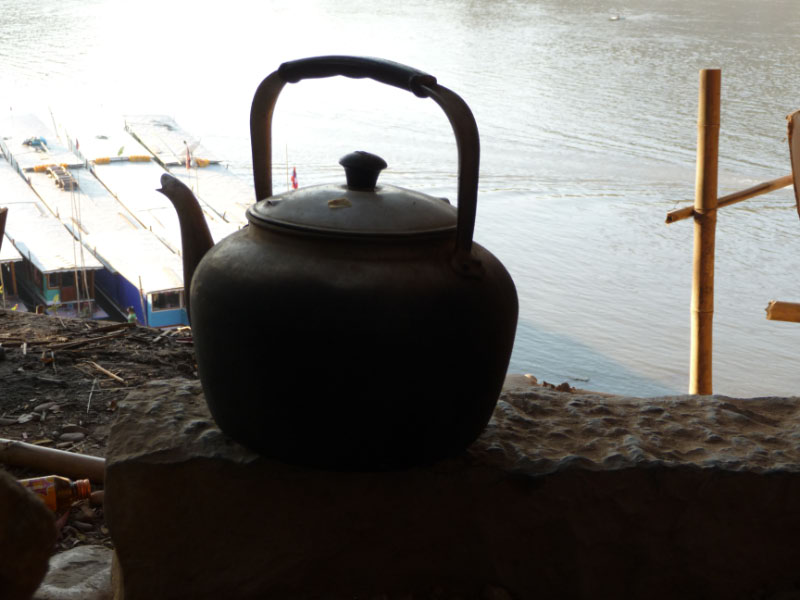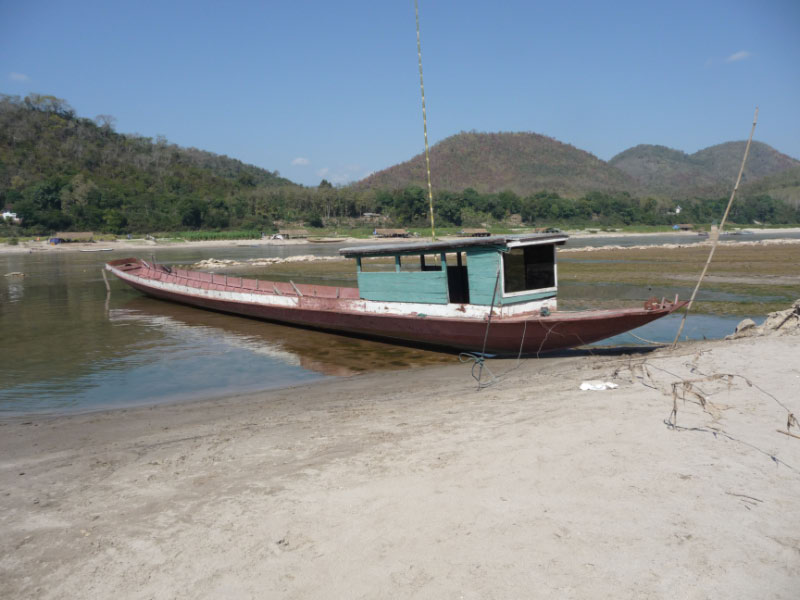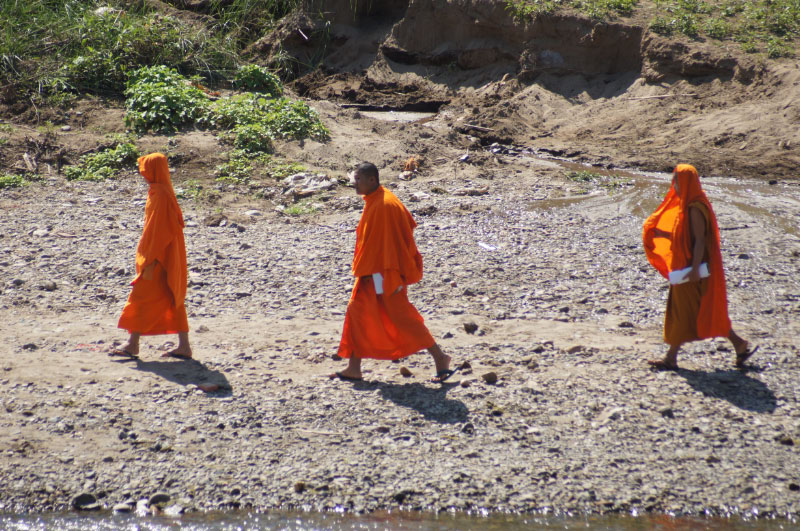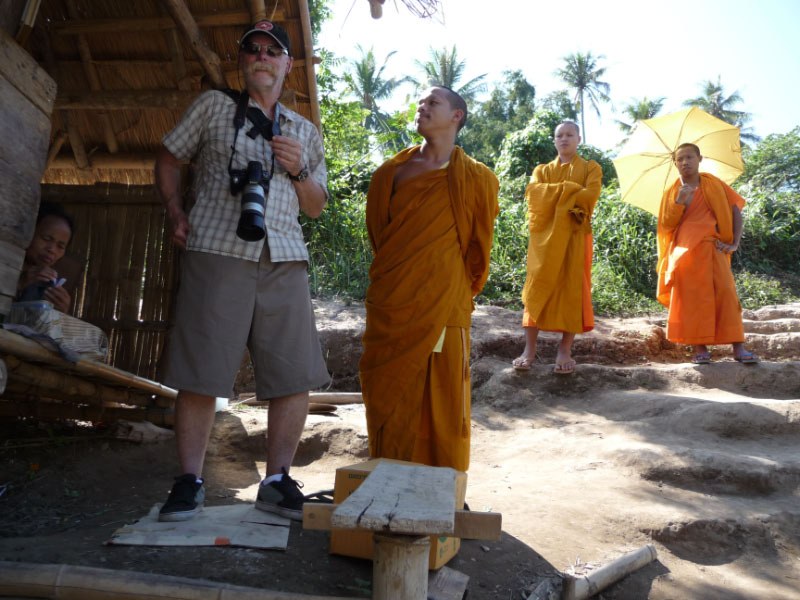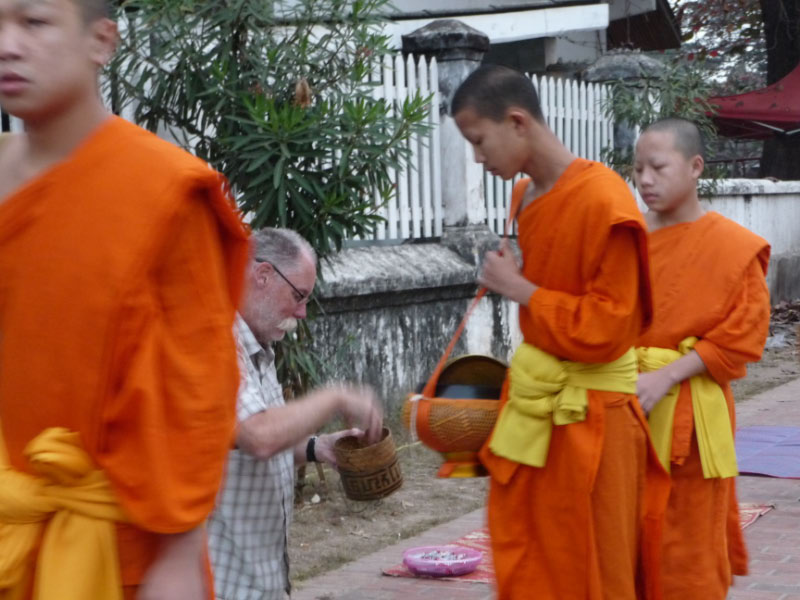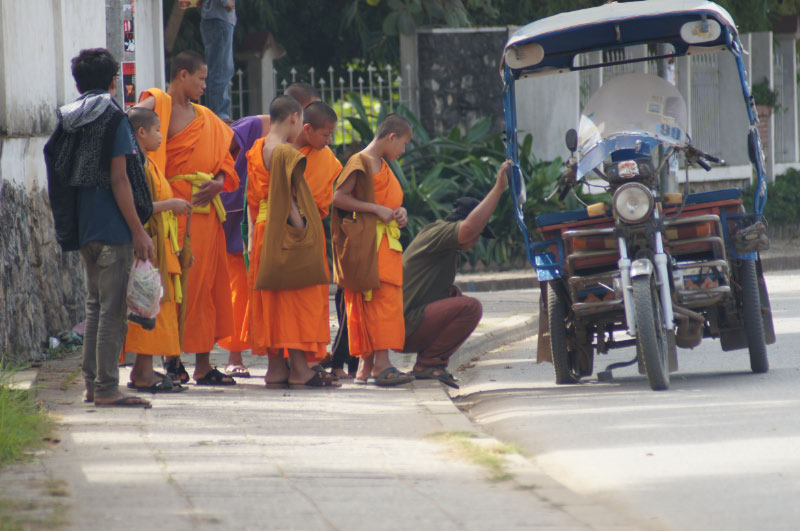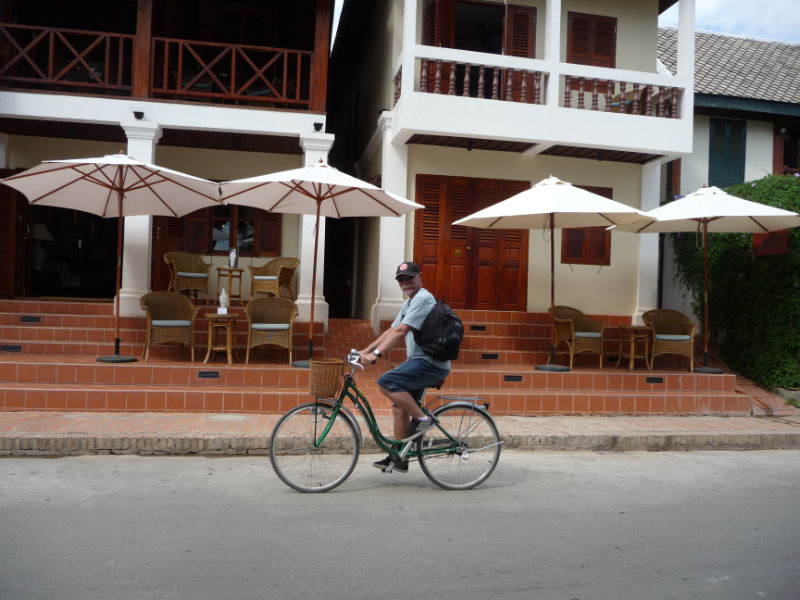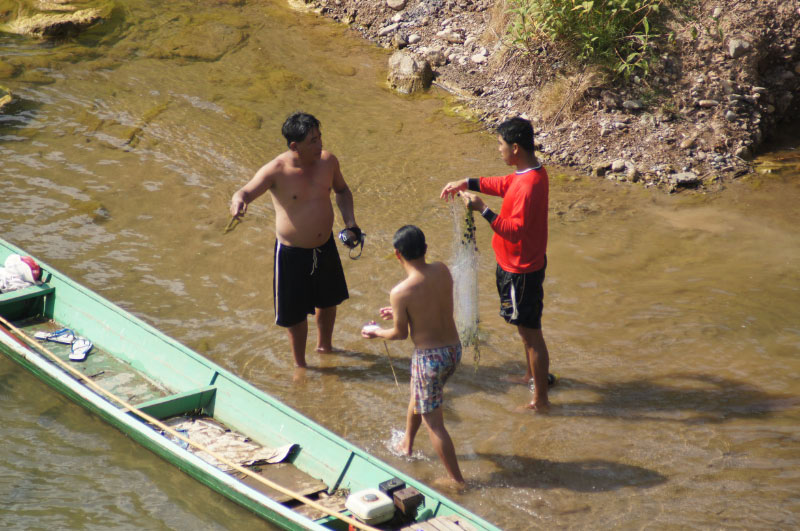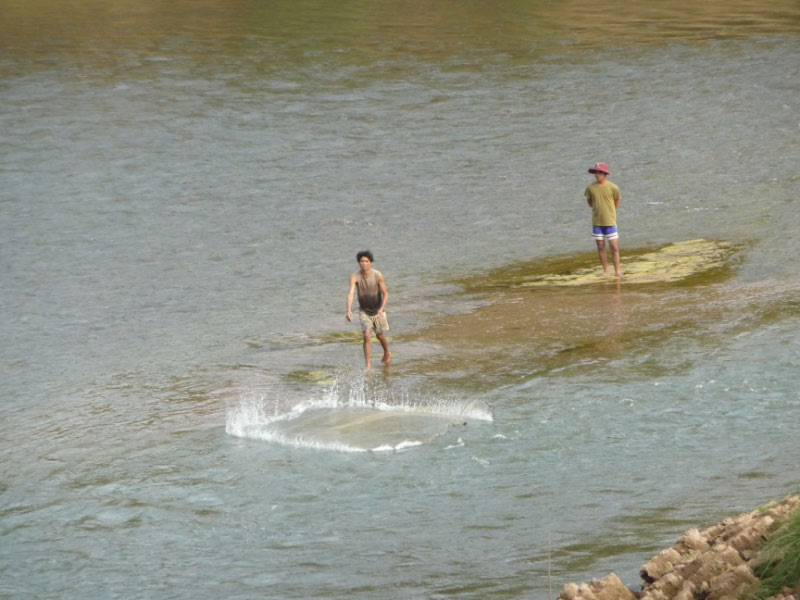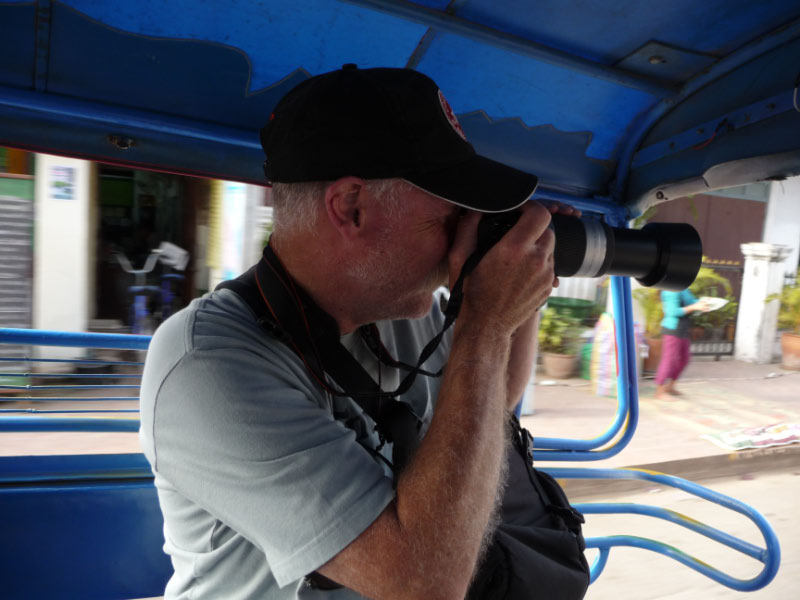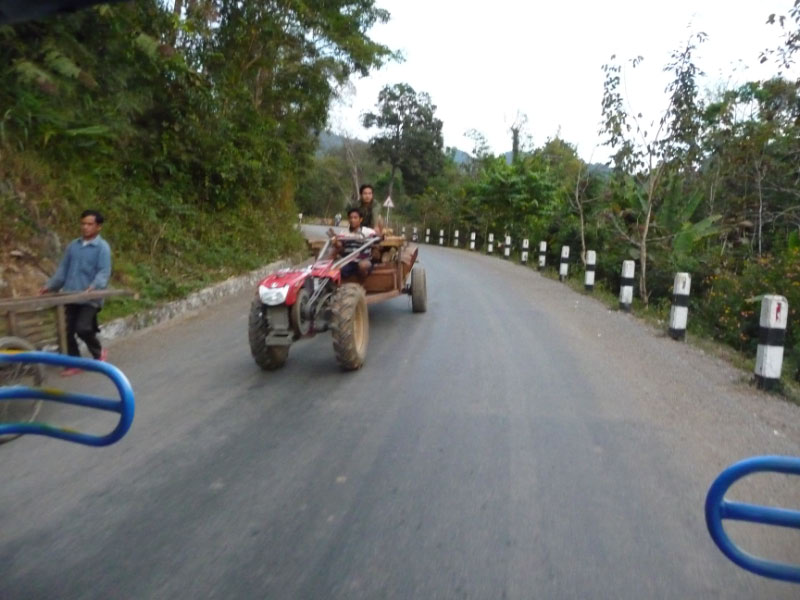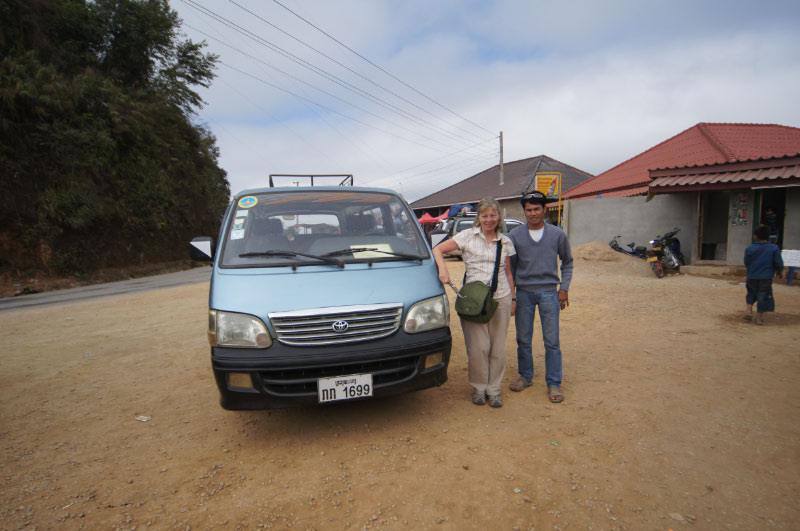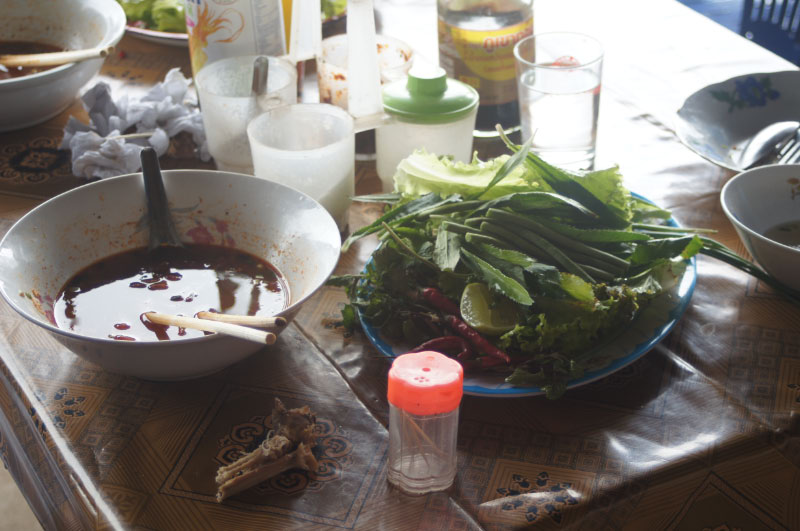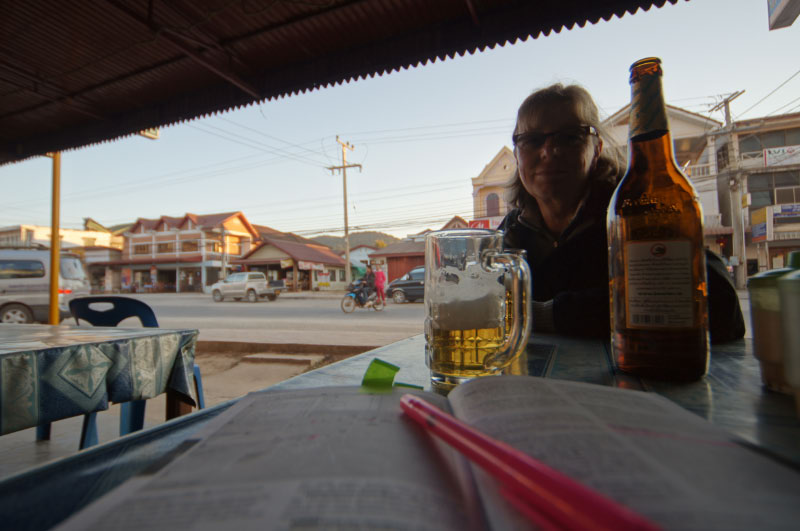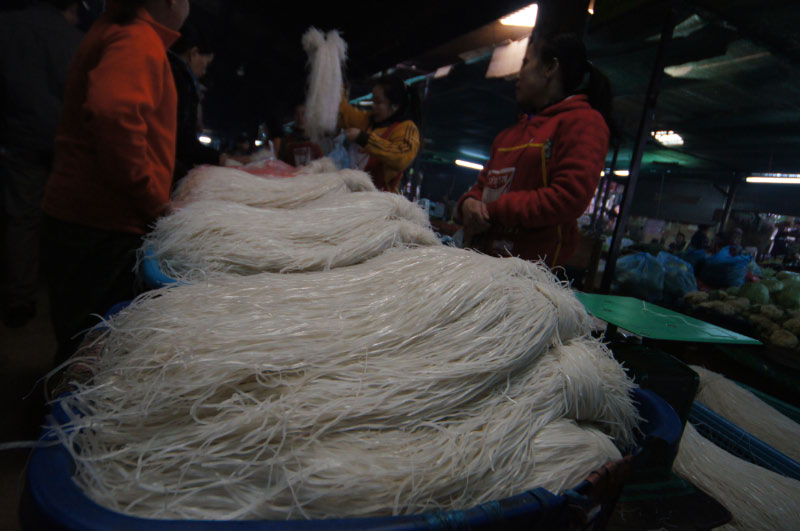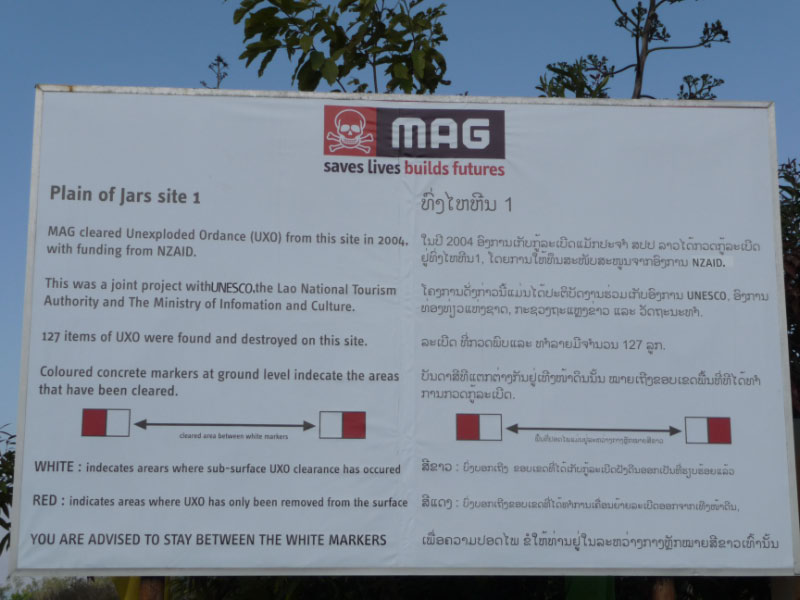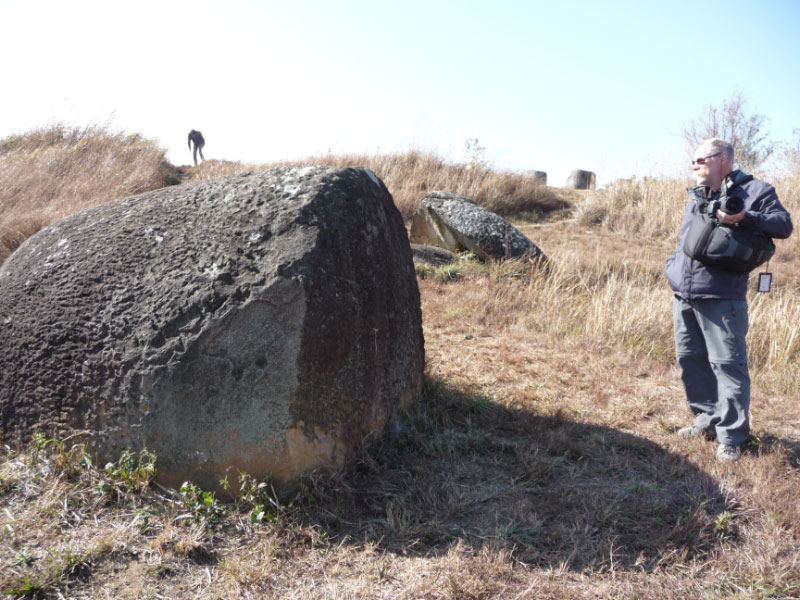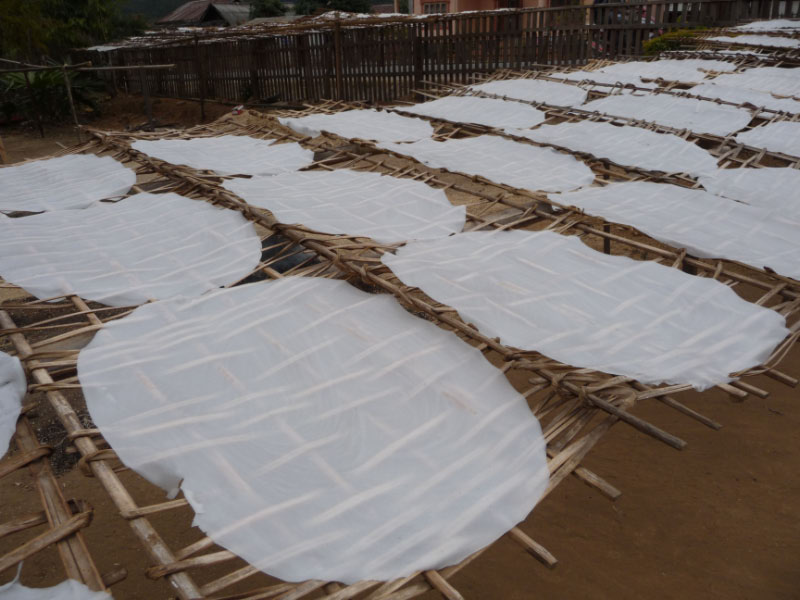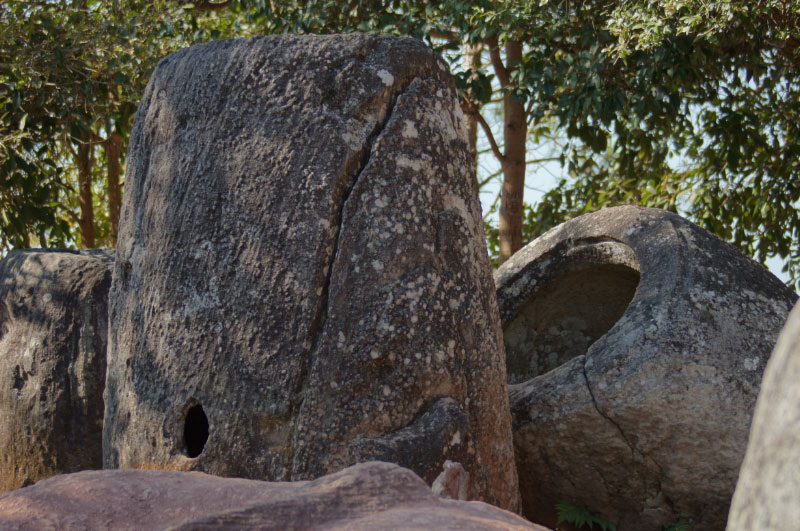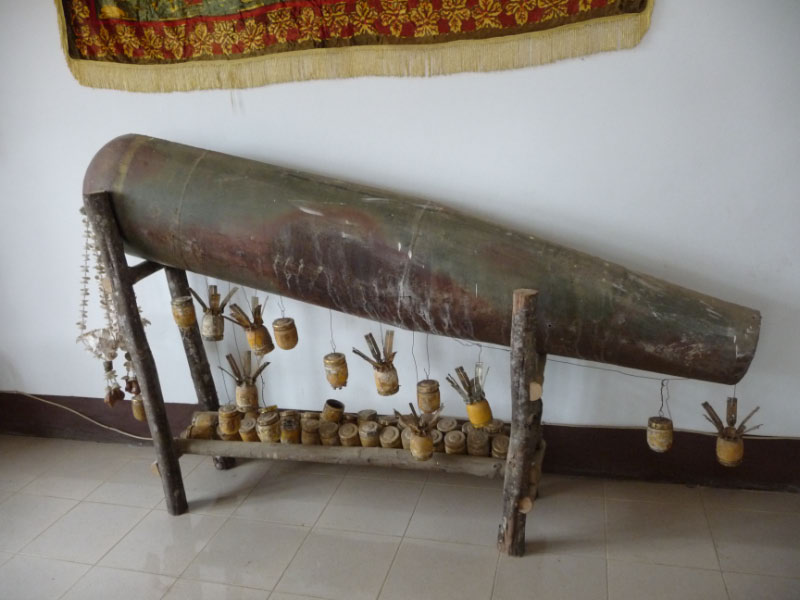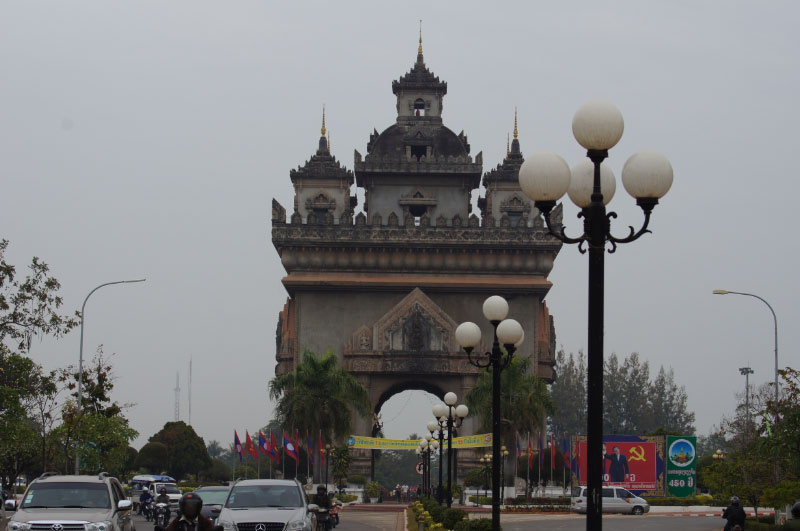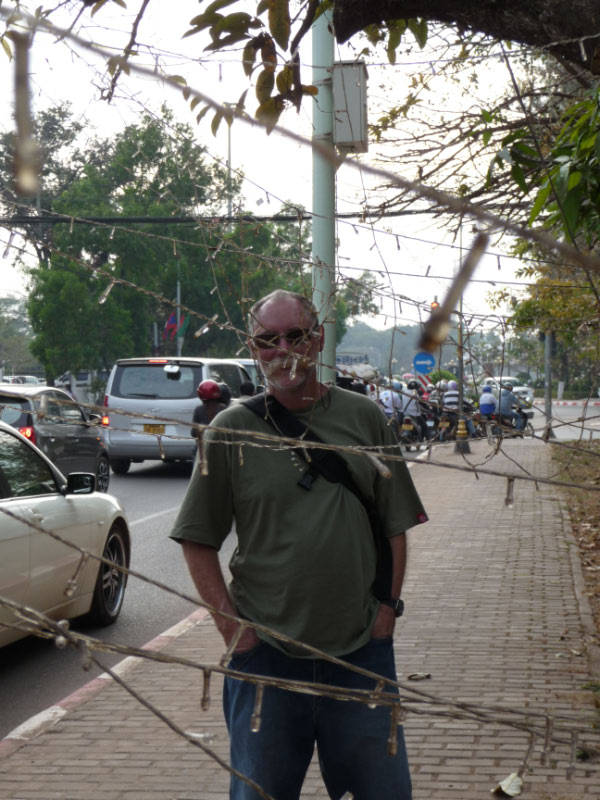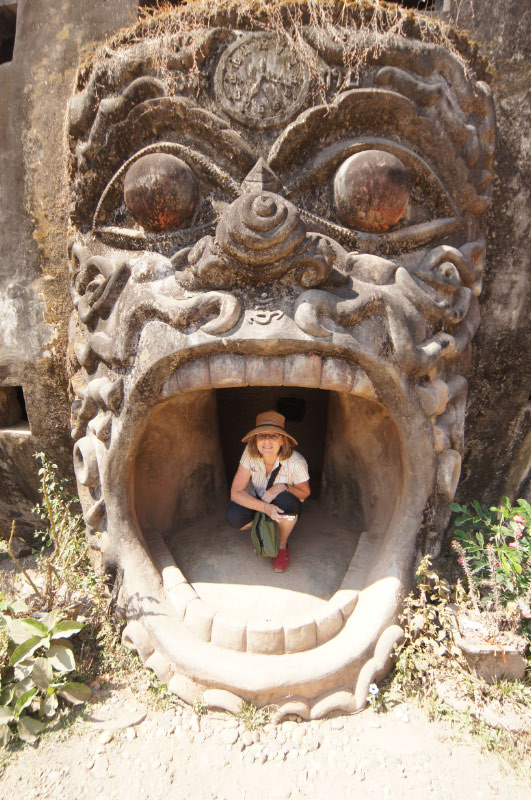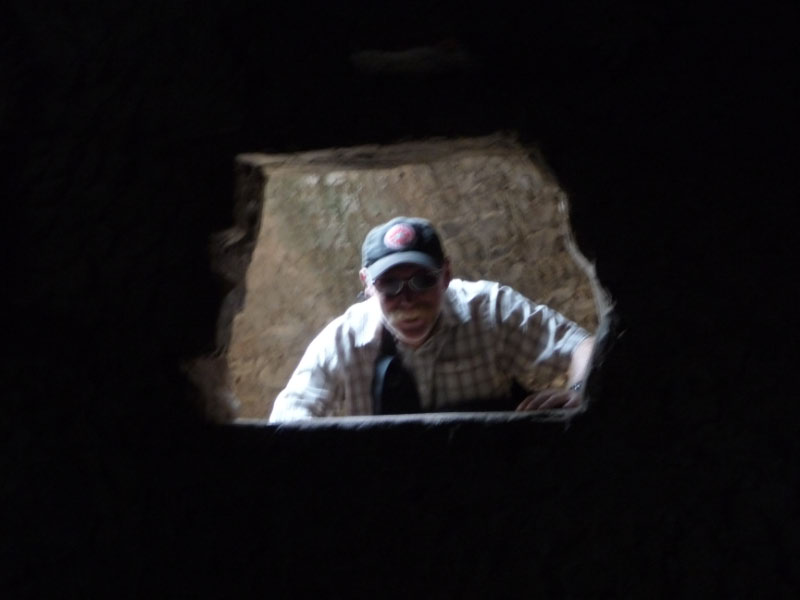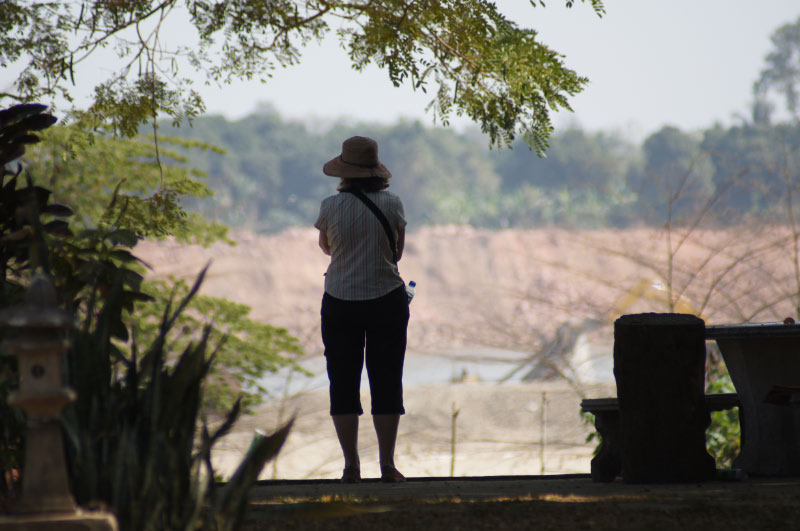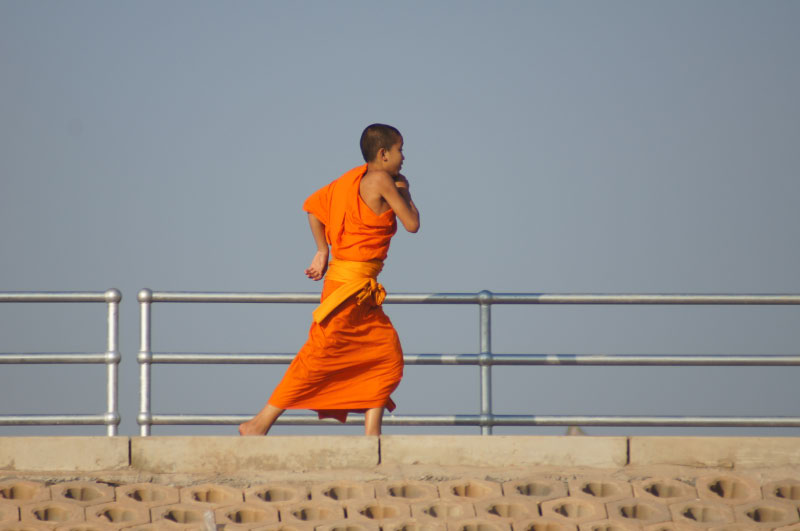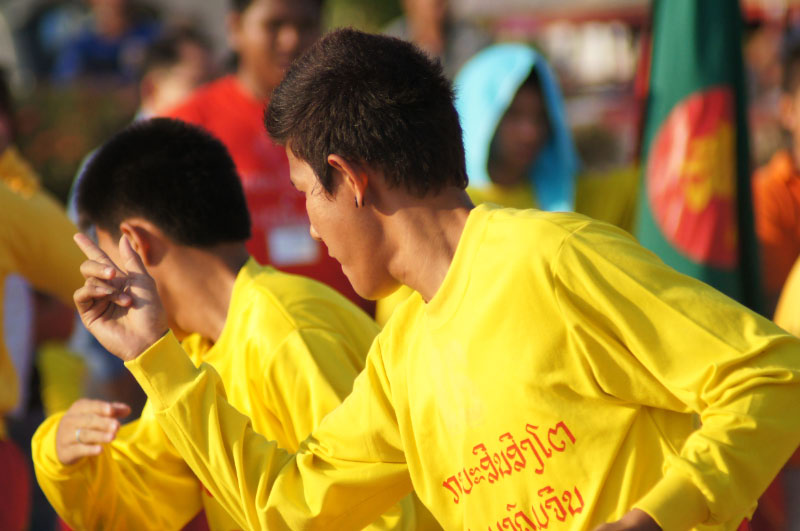Luang Prabang
After the hectic pace and cold weather of Hanoi, Luang Prabang was a delightful next stop. The sun was shining, the air was warm and our hotel was towards the end of the peninsula where only crowing cocks, barking dogs and Buddhist bells could interrupt a good sleep.
Luang Prabang is a “soft” spot, good cafes, well priced wine and little hawking. Situated on the mighty Mekong, sunsets were beautiful and the night market colourful.
Luang Prabang is famous for the monks that accept alms early in the morning, so we were up and out at 6am to sit by the road with our rice and bananas, which we dutifully placed in their containers. At other times we found the monks preferred to shy from our attention.
Phonosovan and the Plain of Jars
Phonosovan is to the east in northern Laos. It’s main claim to fame is the Plain of Jars. Stone jars dating over 2000 years old which archaeologists believe are funery urns, but the locals insist they were used to store food and drink for the biggest party celebration in all time that lasted seven months after a massive battle win.
Phonosovan is also in the middle of an area that was carpet bombed by USA during the Indochina war. There are many areas off limits because of UXO (UnExploded Ordenance) and we even saw a bomb clearing operation.
The journey was long, 7 hours from Luang Prabang and a further 9 hours to Vientiane on rough, mountainous roads, often hemmed in by villages where we dodged cows, buffalo, goats, dogs, chickens, bikes and even children playing on the road which was the only flat surface available.
But the long drive was interesting as we drove through many poor villages and got to appreciate life in Laos.
Vientiane
Our hotel in Vientiane, capital of Laos, was in the midst of monastries and wats so we were surrounded by saffron robed monks.
The city is small and easy going, immediately across the Mekong from Thailand.
We learned that the annual water level in the Mekong is dropping substantially as China redirects the flow for their own farming purposes.
We also learned that China are mining for gold, de-foresting and setting up factories such as cement making, and in return making roads that transport their goods through Laos to neighbouring countries.
e_header.jpg)










